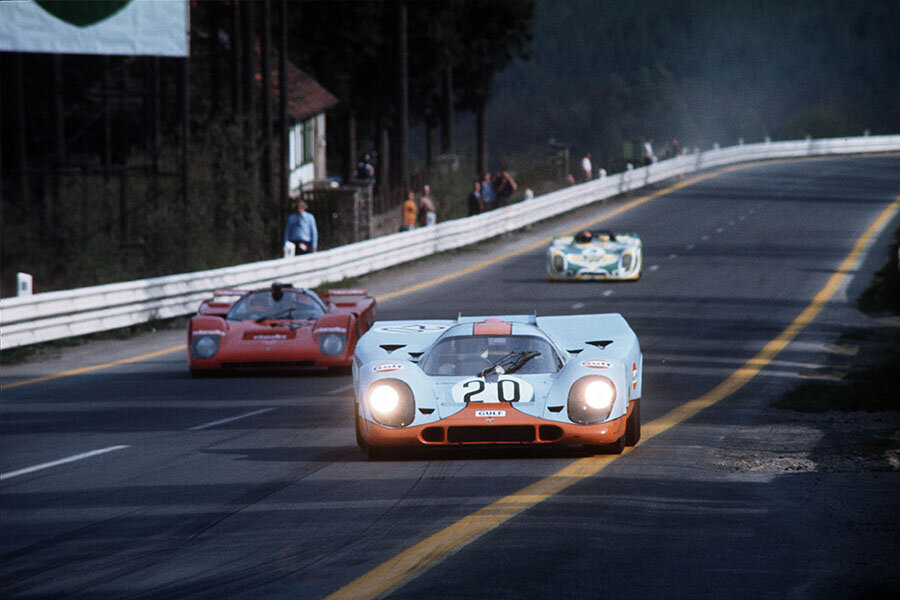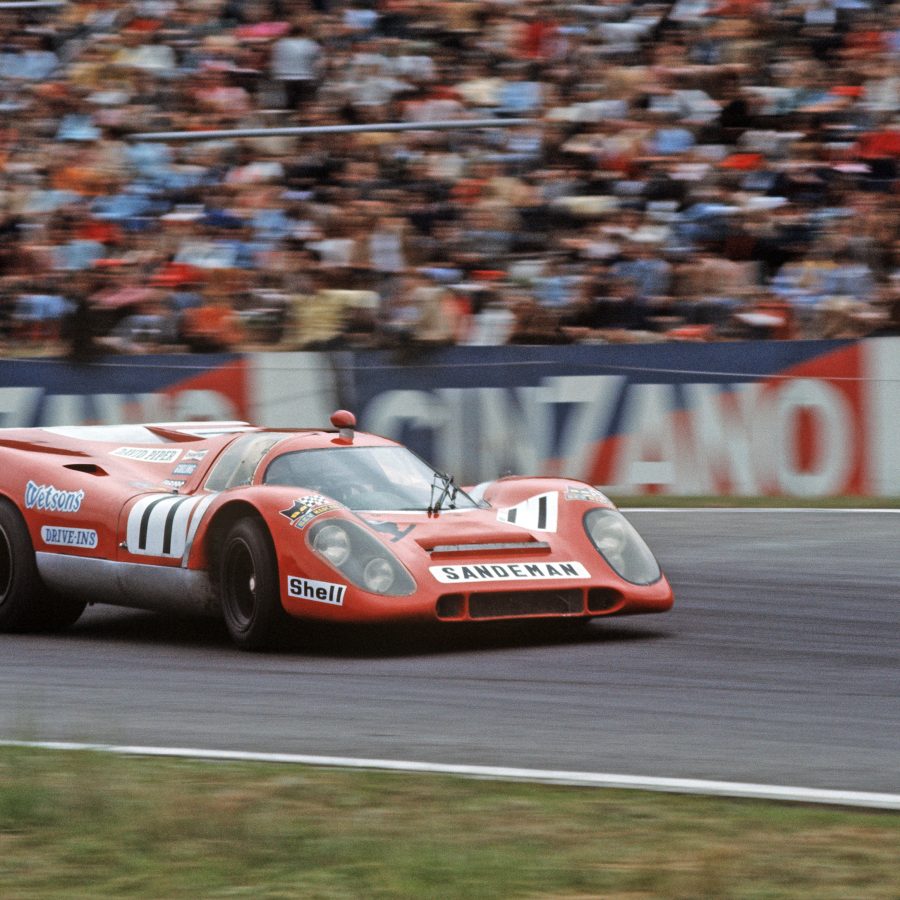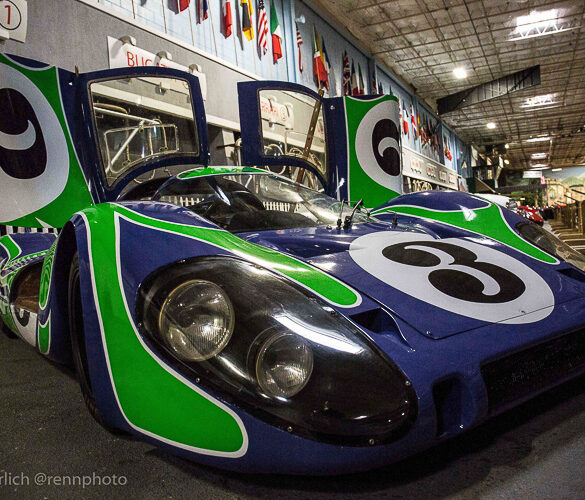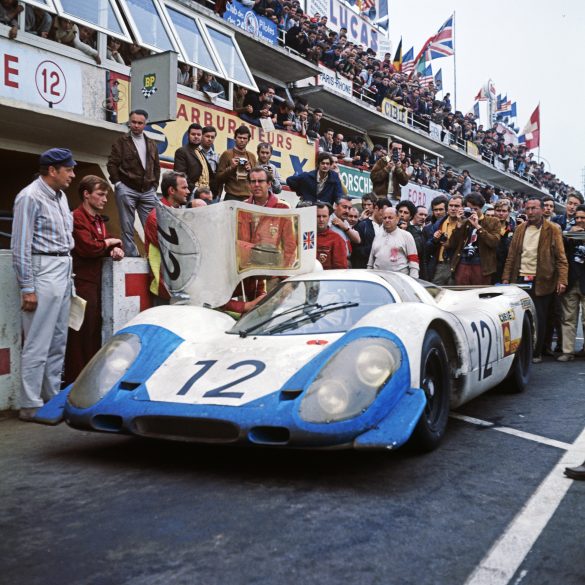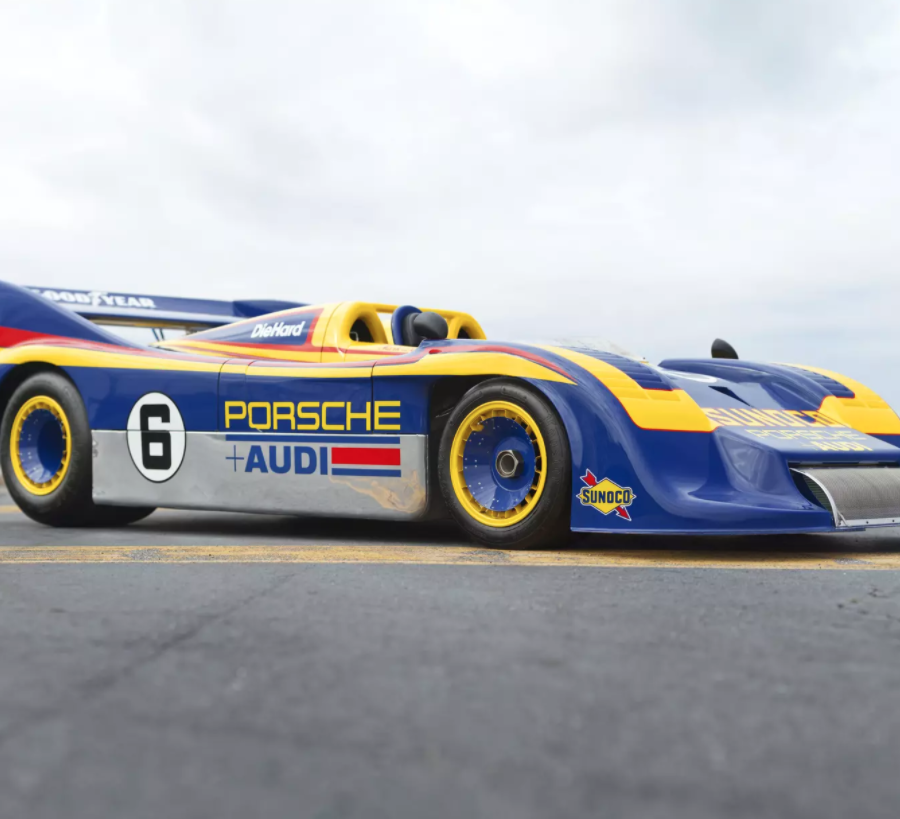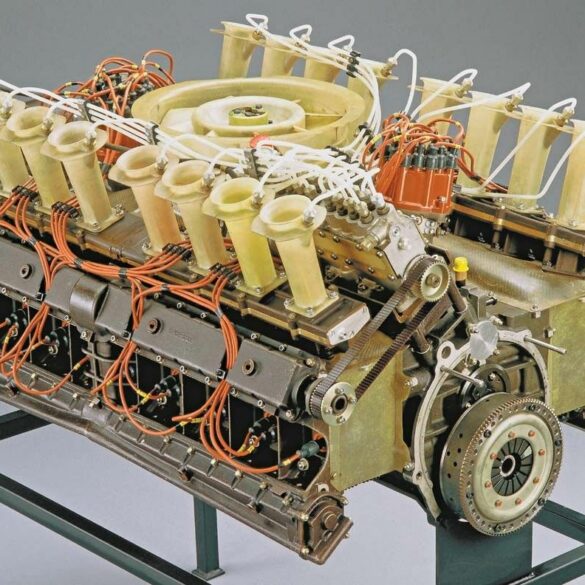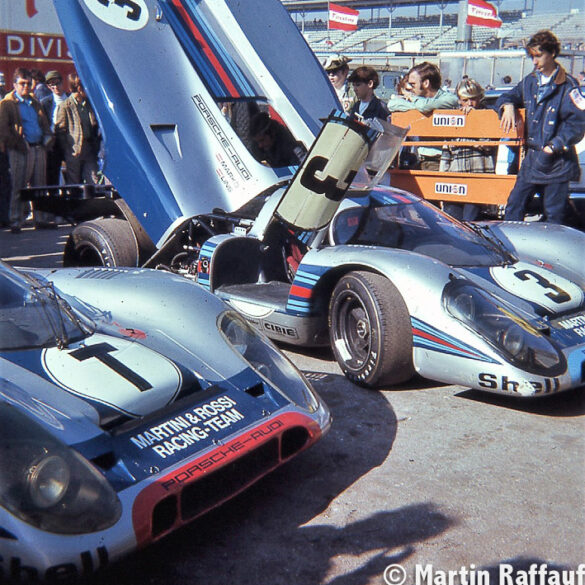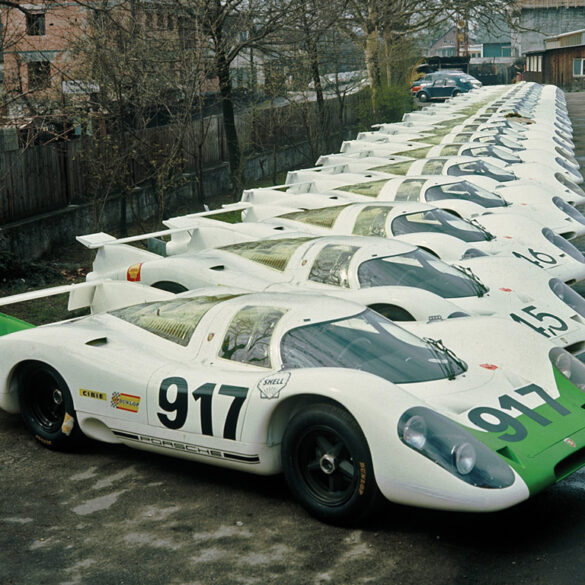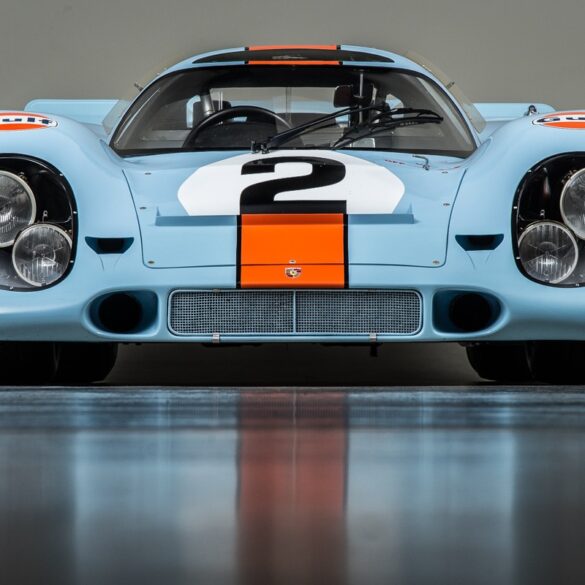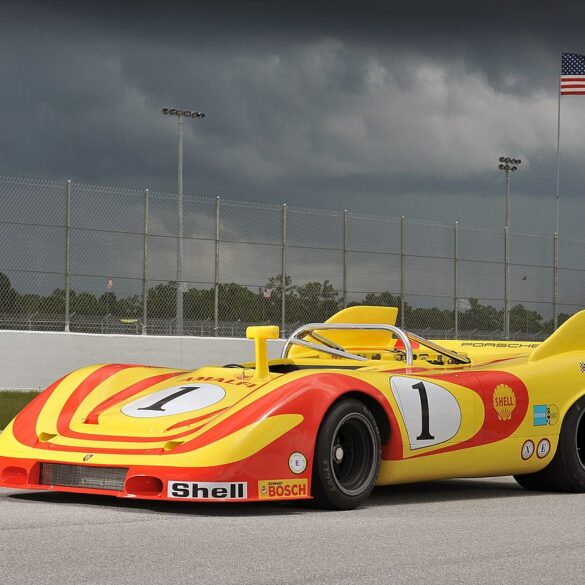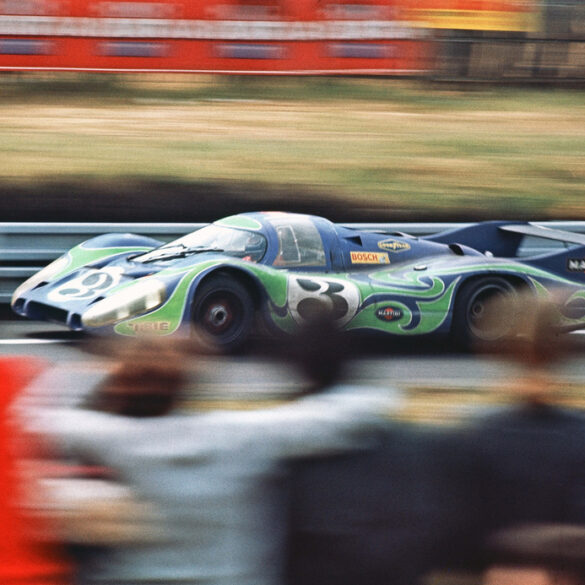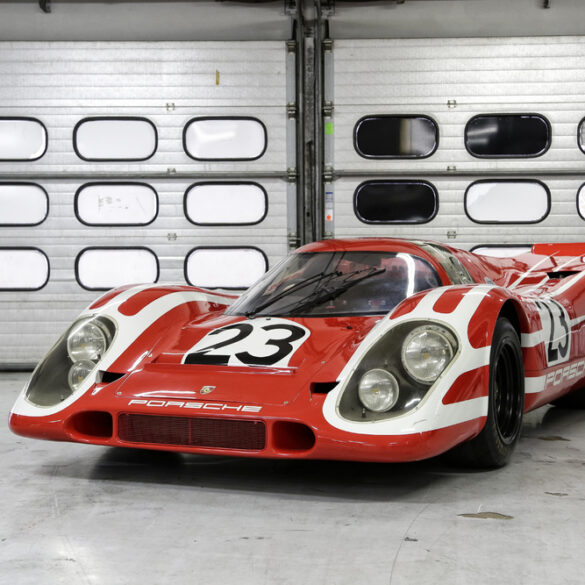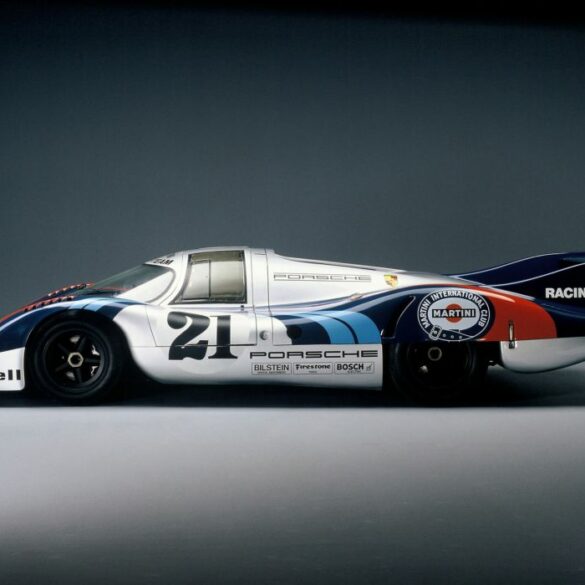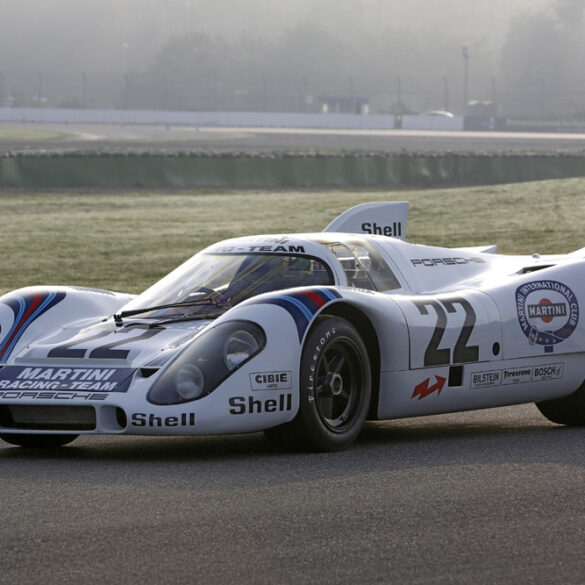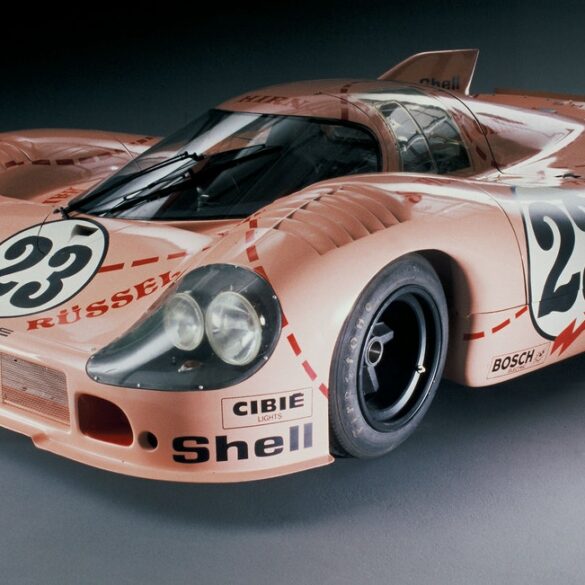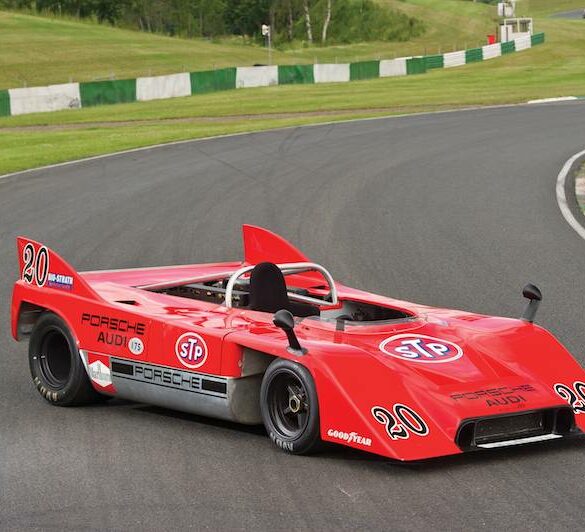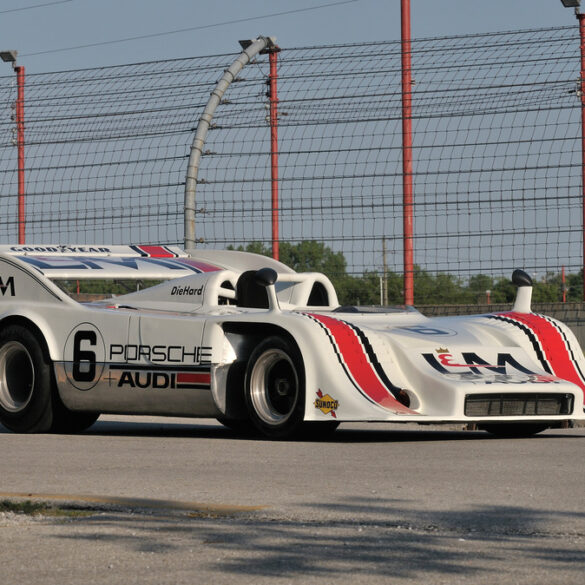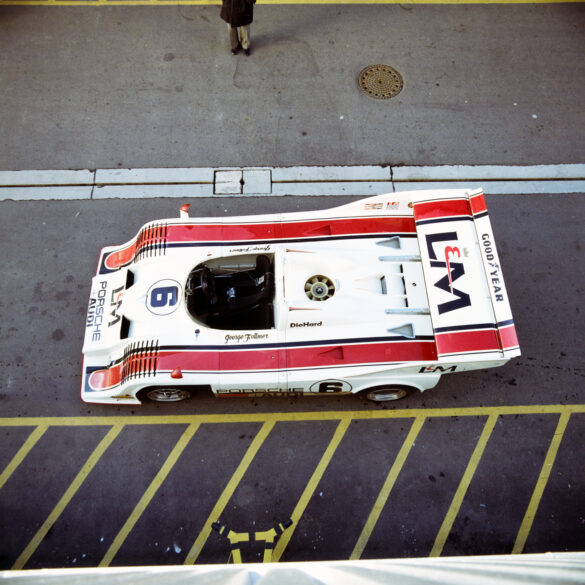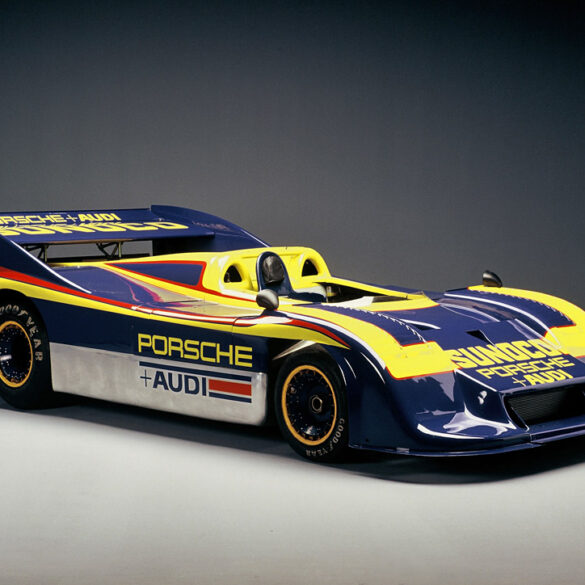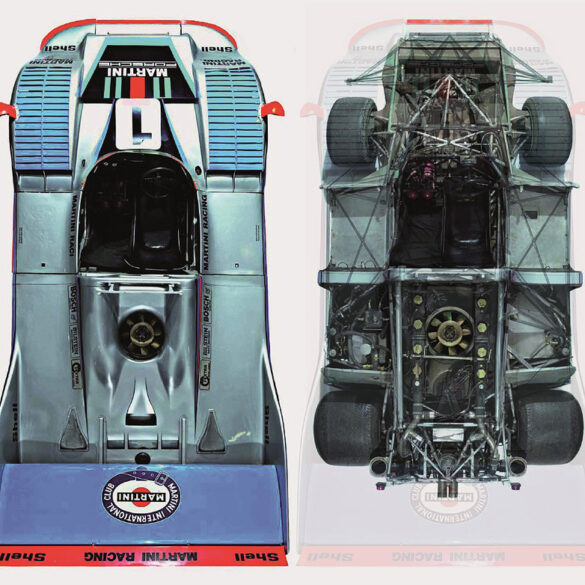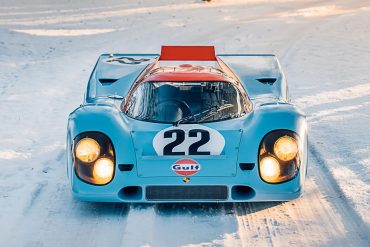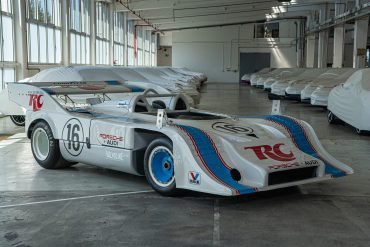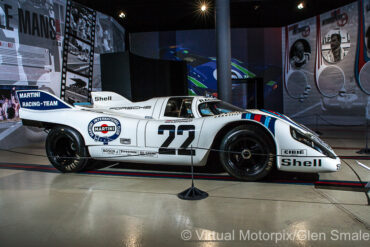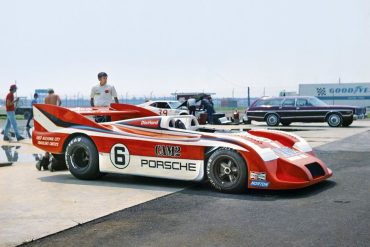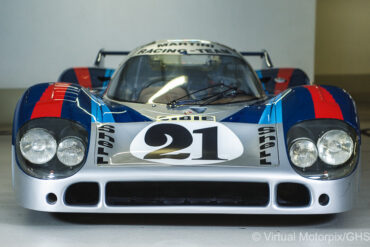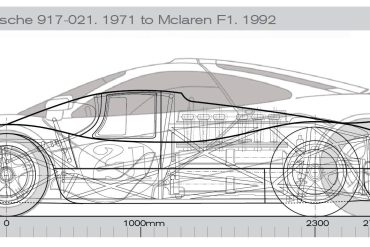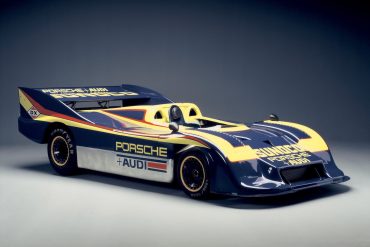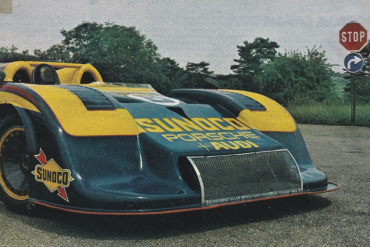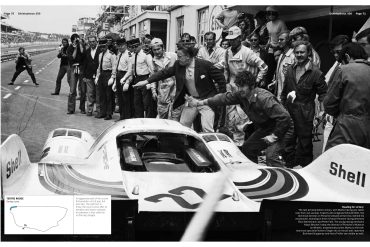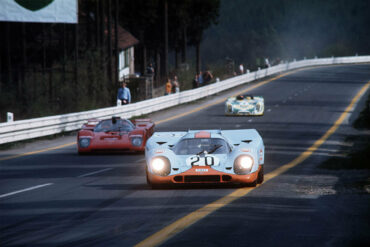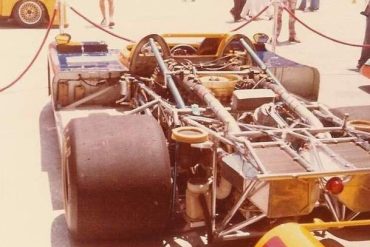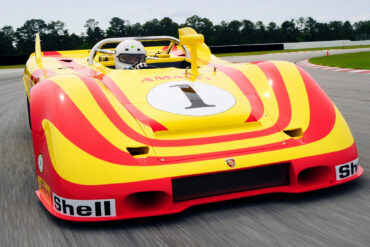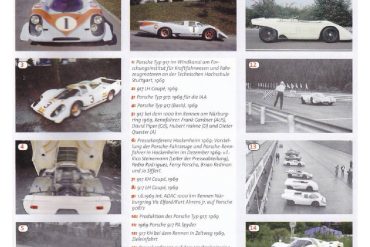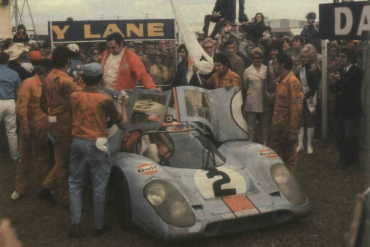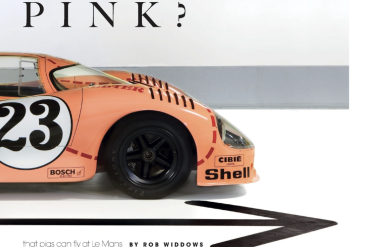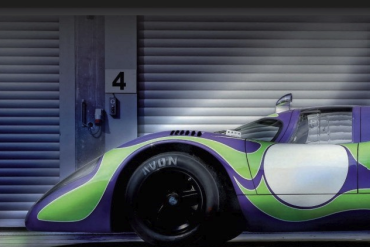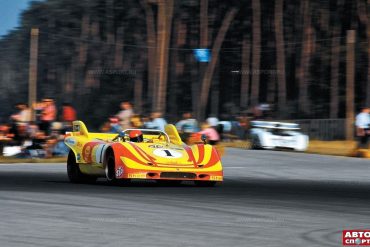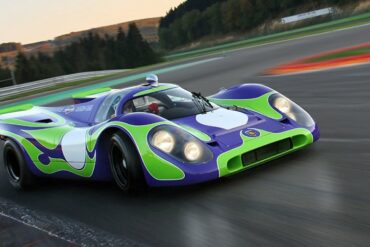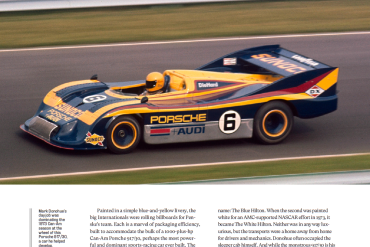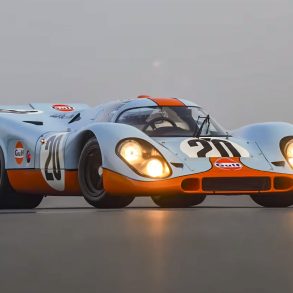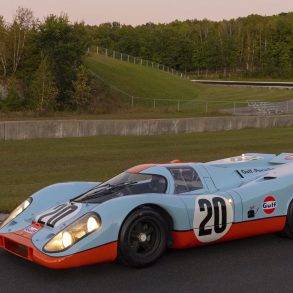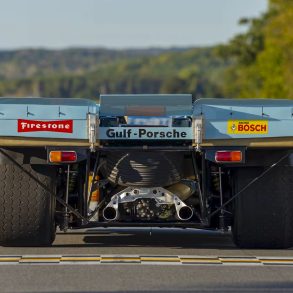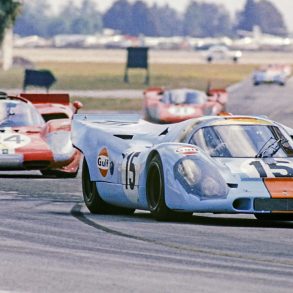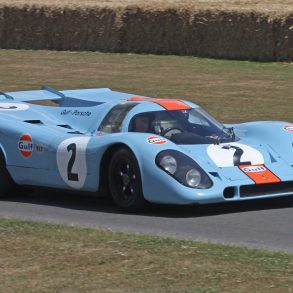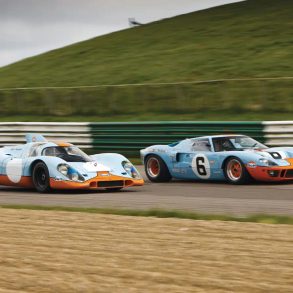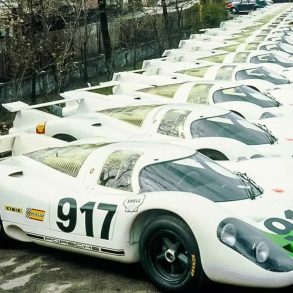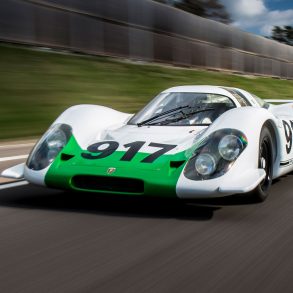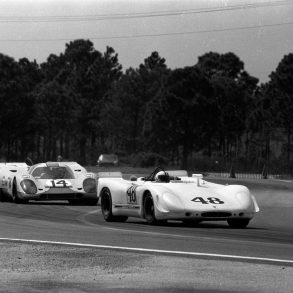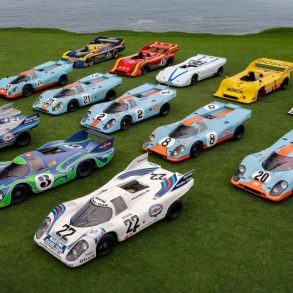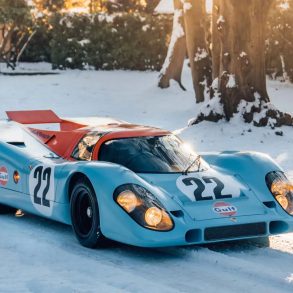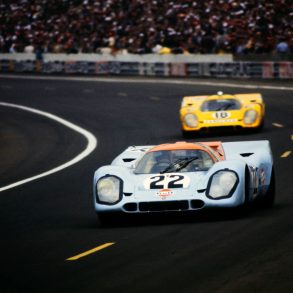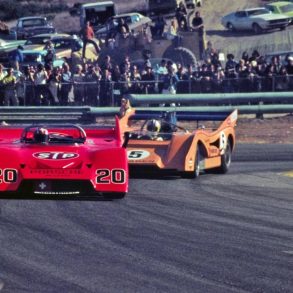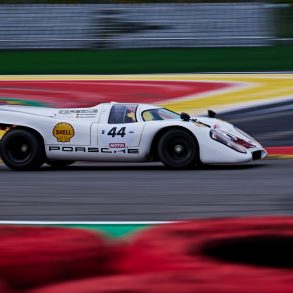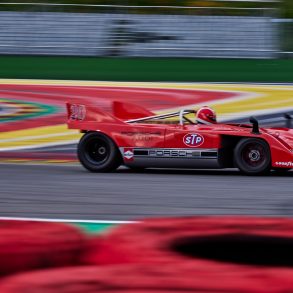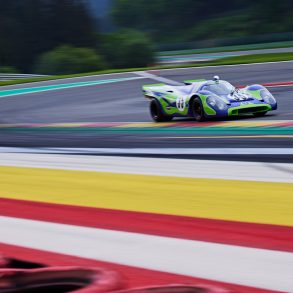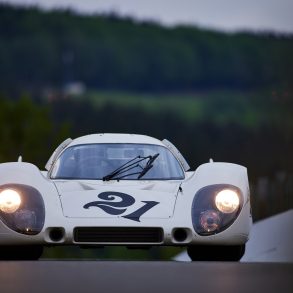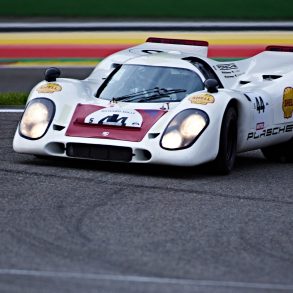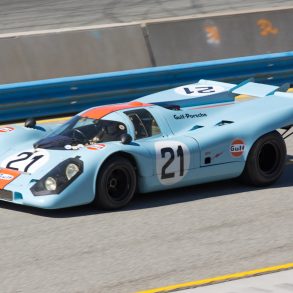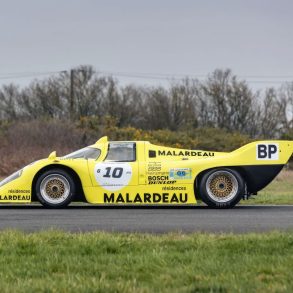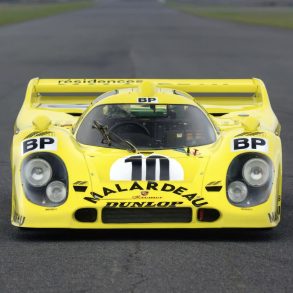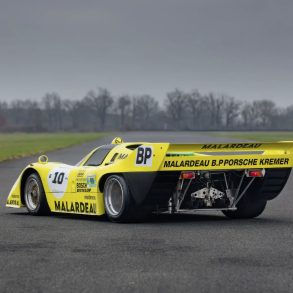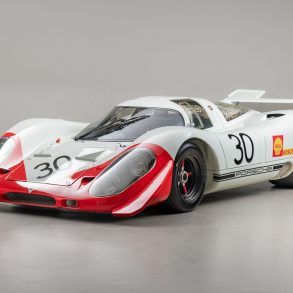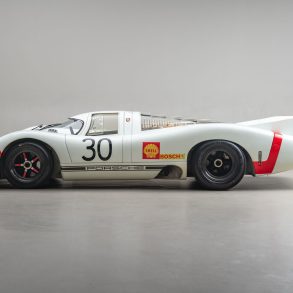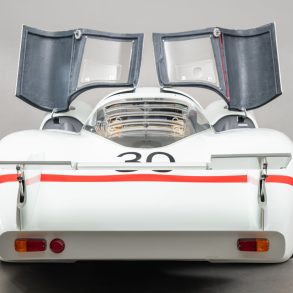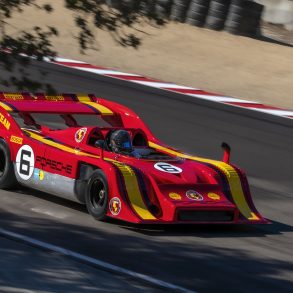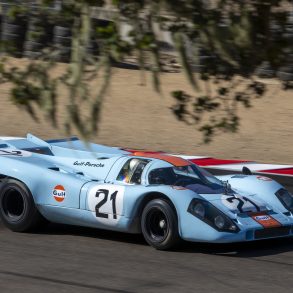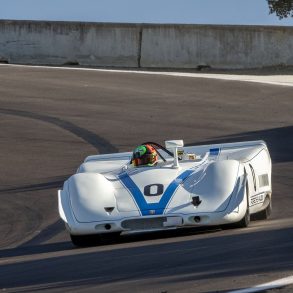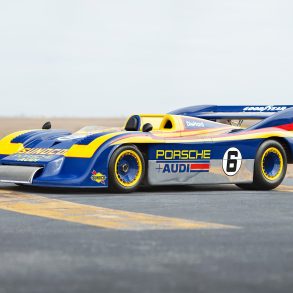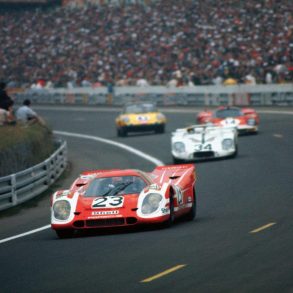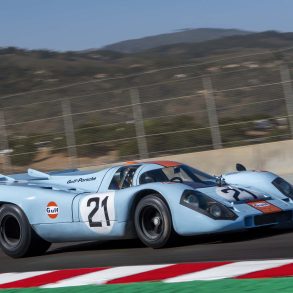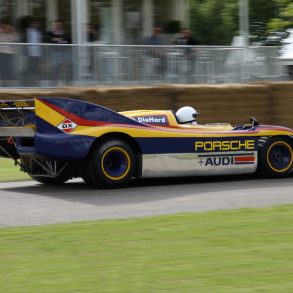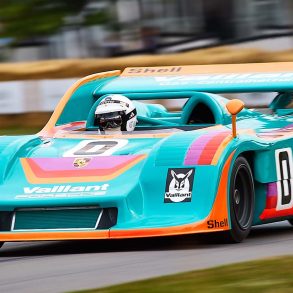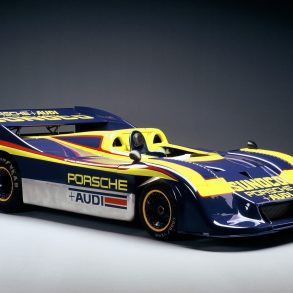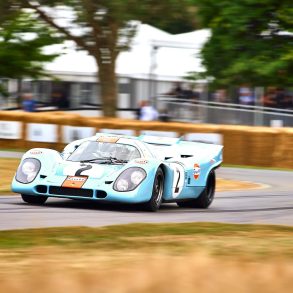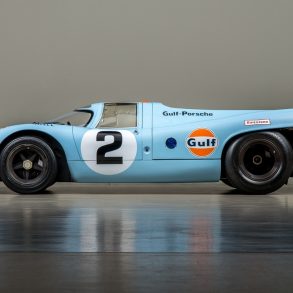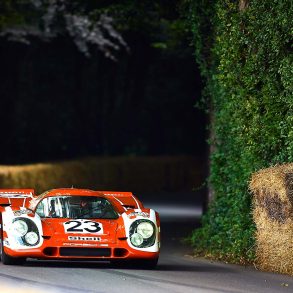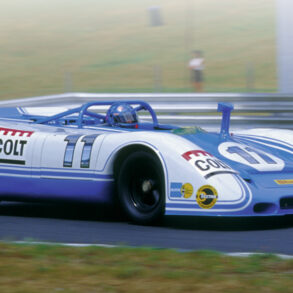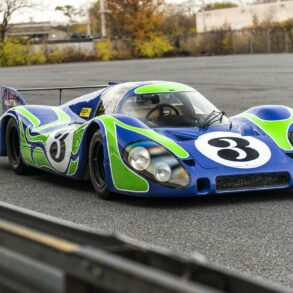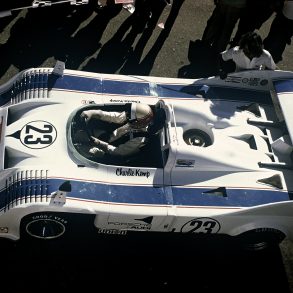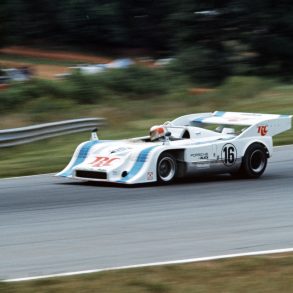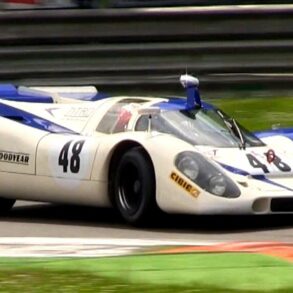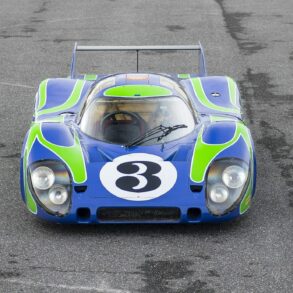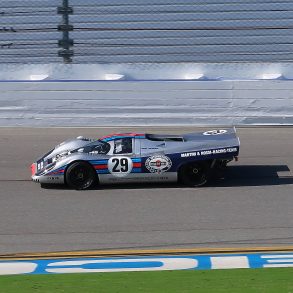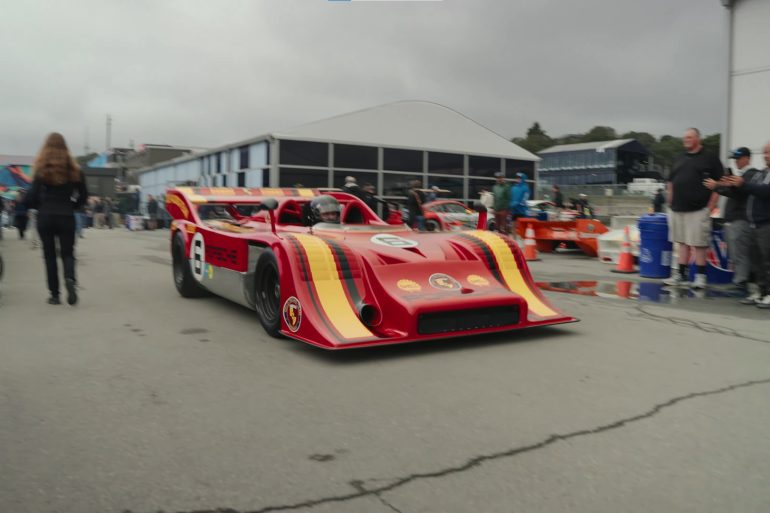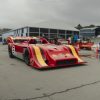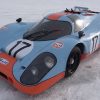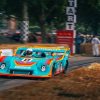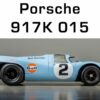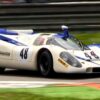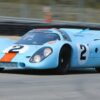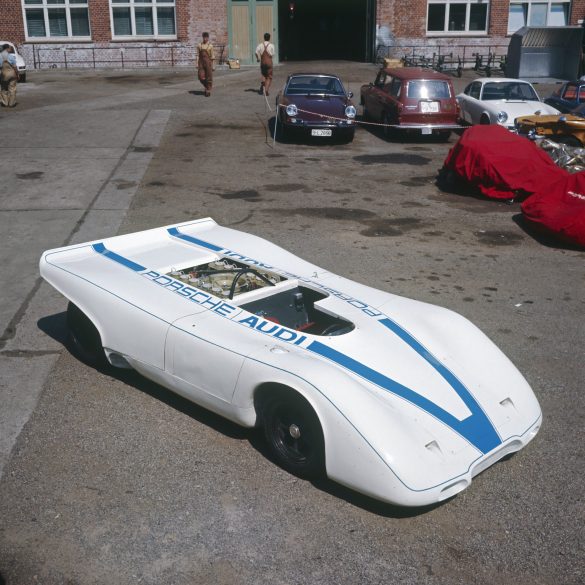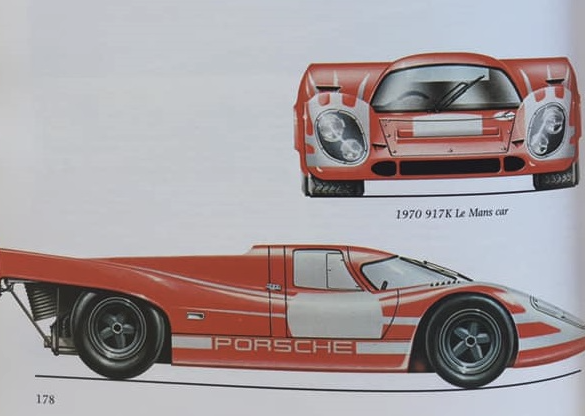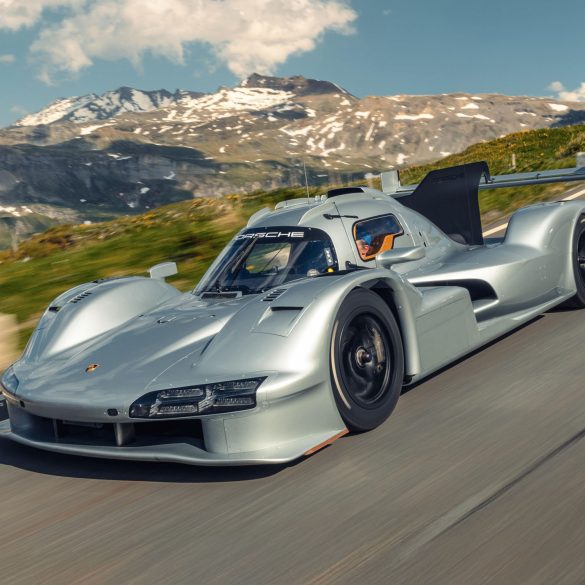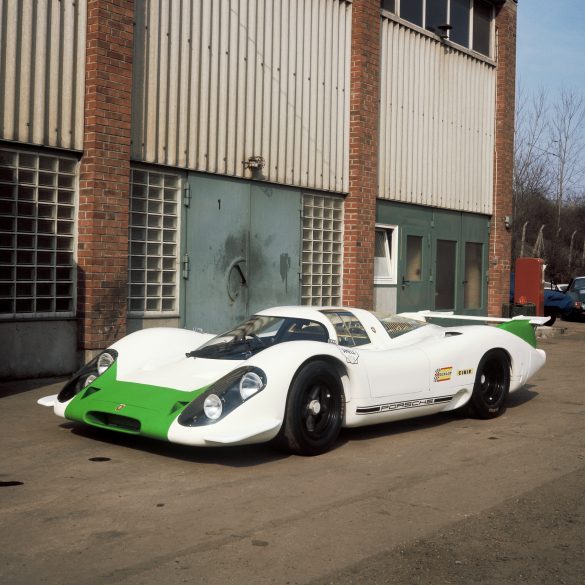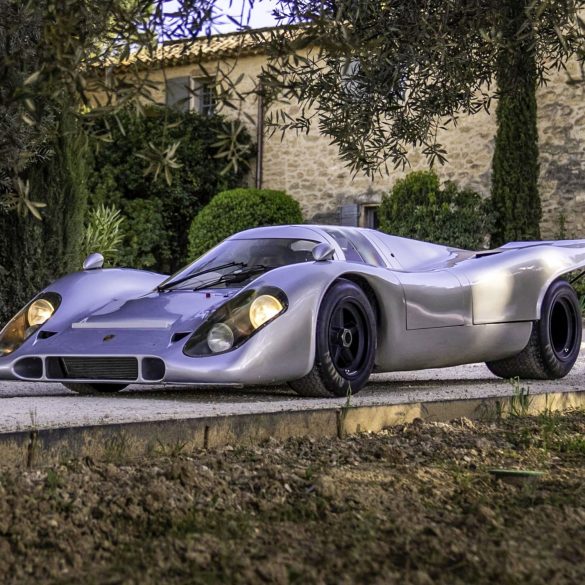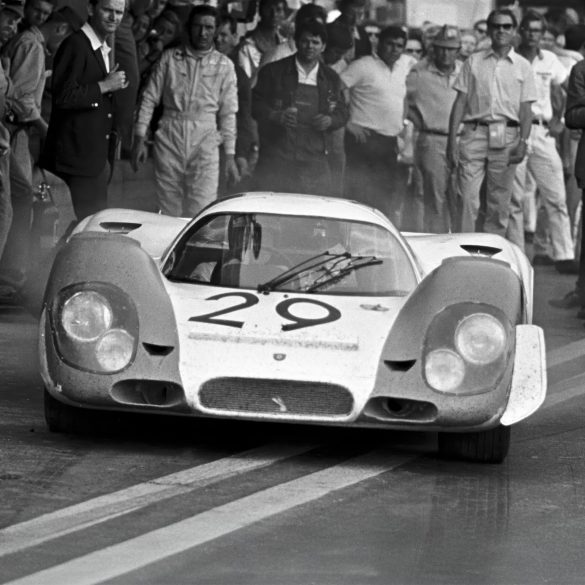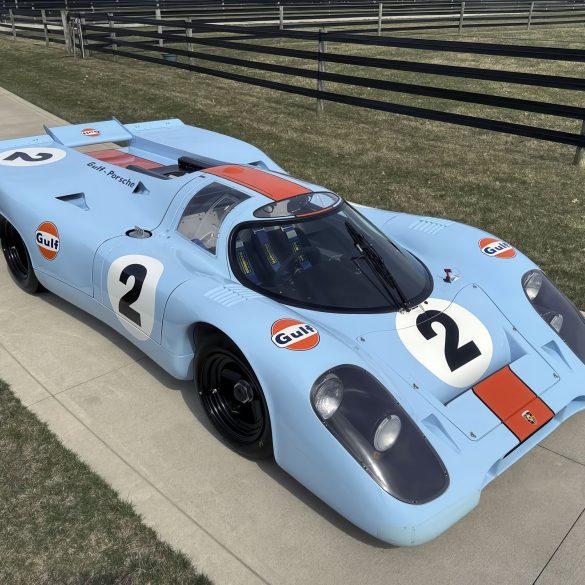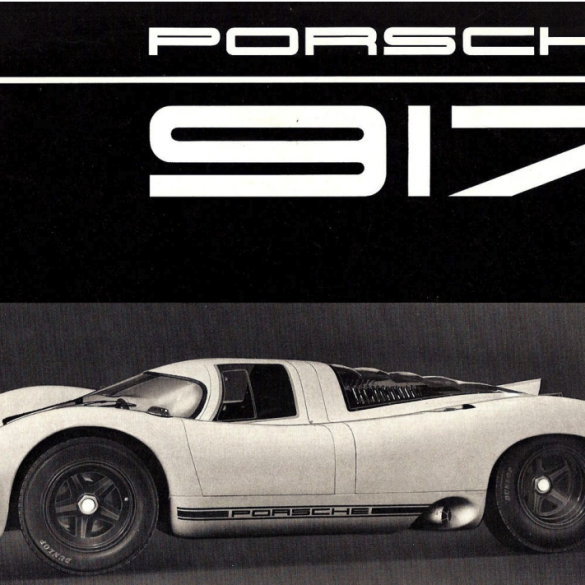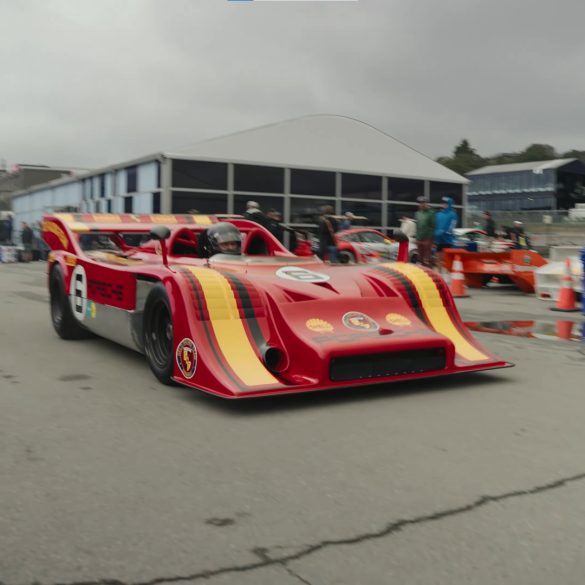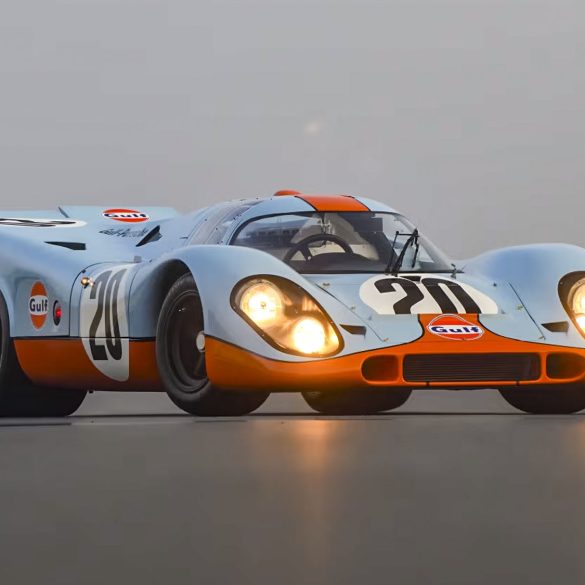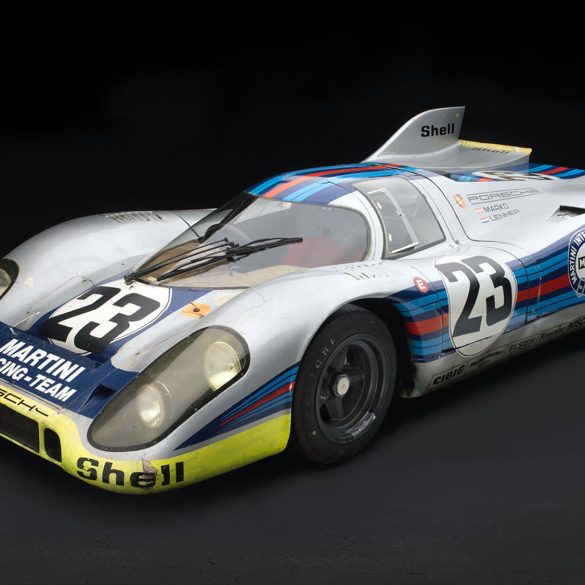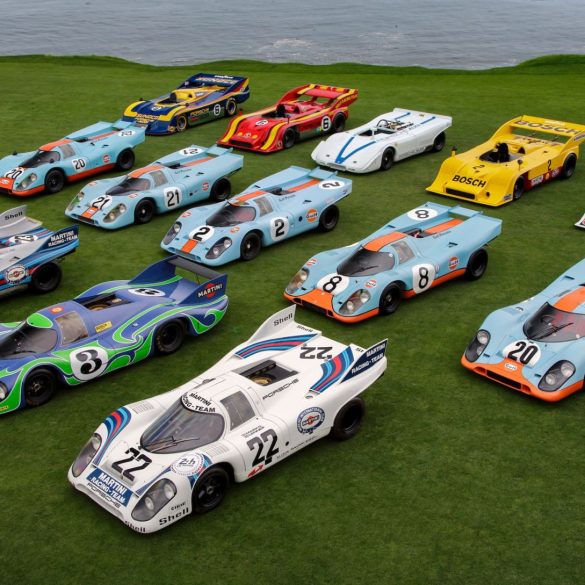Porsche 917 - The Ultimate Guide
Brutal. Beautiful. Unmatched.
Model Guides / Featured Stories / Pictures & Videos / Data & Research / FAQs / News & Updates
Porsche 936 Basics
Manufacturer: Porsche
Production Years: 1969 - 1973
Designer: Hans Mezger
Layout: Rear mid-engine, RWD
Engines: 4.5 L Type 912 Flat-12, 4.9 L Type 912 Flat-12, 5.0 L Type 912 Flat-12, 5.4 L Twin Turbo Flat-12
Transmission: 4 or 5-speed manual
Premiere: Mar 12 1969 at Geneva Show
Achievements: Le Mans winner 1970-1971, International Championship for Makes winner 1970-1971, Interserie winner 1970-1971-1972-1973-1974, Can-Am winner 1972-1973
Predecessor: Porsche 908
Successor: Porsche 936
The Porsche 917 is more than just a race car—it's a symbol of speed, engineering genius, and Porsche’s relentless drive to conquer the world’s greatest endurance races. Introduced in 1969, the 917 marked a dramatic leap forward for Porsche, pushing the brand into the realm of extreme performance and motorsport domination. It was designed specifically to take on the 24 Hours of Le Mans under the FIA’s new 5.0-liter prototype rules, and what Porsche delivered was a machine that would change racing history forever.
At the heart of the 917 was a monstrous 4.5- to 4.9-liter flat-12 engine, an air-cooled powerhouse that could produce up to 630 horsepower in its early form—and significantly more in later turbocharged variants. The car was incredibly lightweight thanks to an aluminum spaceframe chassis, and while its first outings were plagued by high-speed instability, Porsche quickly refined the aerodynamics, especially with the introduction of the 917K (Kurzheck or "short-tail") variant. Once those issues were solved, the car became nearly untouchable.
The Porsche 917’s breakthrough came in 1970, when it secured Porsche's first overall victory at Le Mans, followed by another win in 1971. These victories not only established Porsche as a top-tier endurance racing manufacturer but also ushered in what many consider the golden era of sports car racing. Beyond Le Mans, the 917 dominated in the World Sportscar Championship, and later evolved into the fire-breathing 917/10 and 917/30 variants that crushed the Can-Am series with turbocharged power exceeding 1,000 horsepower.
Today, the Porsche 917 remains one of the most revered and iconic race cars ever built. Its blend of raw speed, technical brilliance, and storied success continues to captivate racing fans, collectors, and engineers alike. Whether screaming down the Mulsanne Straight or thundering through Laguna Seca, the 917 left a legacy that’s still felt every time Porsche returns to the top level of motorsport.
Porsche 917 Development
Few race cars have attained the same notoriety as the 917. It was dangerously quick and also reliable enough to win Porsche’s first overall victory at Le Mans in 1970.
The feat was repeated in 1971 and the 917 has now become an icon of Porsche performance. Even more so after being extensively featured in Steve McQueen’s film, Le Mans.
It’s true that Porsche took their most daring step forward with the 917, but it followed a long and progressive development of sports racing prototypes. Until the 917, Porsche and Ferdinand Piëch had made very successful sports race cars limited to the smaller classes.
These included the 904 Carrera GT, 906, 908, but they were often behind the GT40 and Ferrari Prototypes which would take overall victory.
In April 1968, the CSI reduced the minimum required production for sports car homologation from 50 to 25 cars. This caught the attention of Piëch who considered a new sports prototype that could win Le Mans.
The 908 fit well within the new 3.0 liter prototype class, but it was the 5-liter sports car class known as Group 4 which caught their attention. In it were the V8-powered Lola T70 and Ford GT40 MKI which were very capable of outright victories. Porsche decided the only way to win the World Sports Car Championship was to build 25 copies of a 5.0 liter prototype that would meet the minimum homologation requirements to qualify as a sports car.
After the decision was finalized by Piëch in July 1968, Porsche engineers had 10 months to create an all-new engine and produce 25 complete cars for both the factory and privateers. This risky and expensive investment eventually paid off and positioned Porsche at the top of motor sport.
Engineering
Using the 908's design as a framework, Porsche engineers took the bold task of making the most powerful and lightweight race car possible. They used a chassis structure similar to the 908’s, but it used aluminum instead of steel. The spaceframe chassis weighed only 93 lbs (42 kg). To have enough room for the large engine and driver in the small chassis, the foot well and pedals extended past the front wheels.
An air-cooled engine, called the type 917.910, was similar to the 908’s, but had an entirely new bottom end. Instead of a boxer arrangement, the 917 used a 180º Flat-12 crankshaft which allowed opposite connecting rods to share crankshaft bearings.
This made the engine more compact which was a primary concern. Timing gears were centered in the middle of the block which essentially split the engine in two. Cooling was provided by an electrically powered fan that sat in between the intake trumpets and was exposed through the bodywork.
Displacing under 4.5 liters, power was initially rated around 580 bhp. Each unit took over 160 hours to complete and was made of exotic alloys, magnesium and titanium. Access to the engine was provided by a completely removable rear body section which could be changed to high-downforce or low-drag configurations. For the brief 1969 season, a long swooping tail was used with a full size adjustable rear wing.
Porsche 917 Racing
Porsche first revealed the 917 to the press at the 1969 Geneva Motorshow. This was followed by an intense CSI homologation inspection, demanding that all the cars needed to be complete before the car could race. Remarkably, Porsche produced eight more cars in three weeks to complete the necessary 25 cars. On April 1st, 1969 the 917 was homologated just in time for Le Mans.
During initial tests, the 917 was found to be particularly unstable and many driver’s began to have doubts about its design. At the 1000km of Spa, a long tail 908 was chosen in favor over the 917. Before the 917 hit Le Mans, it debuted at the 1969 Nürburgring 1000km and in the hands of David Piper and Frank Gardner. No factory drivers would chose the 917 and instead piloted 908 Spyders to a 1-2-3-4-5 victory. The 917 trailed in eighth place.
Leading up to Le Mans, many drivers were cautious about the 917. 917s set the fastest lap in practice and looked to have all the right ingredients to win. Three cars were entered in the race, two factory entries and one loaned to John Woolfe Racing. Unfortunately, John Woolfe suffered a fatal crash on the very first lap which was later attributed to his seat belt and lack of experience. The remaining 917 team cars led for around 300 laps before both dropped out with clutch bell housing problems.
For the 1970 season, 917s were sold to Martini Racing, JWA Gulf Racing and Porsche Salzburg—all private teams that would be supported by the factory. Under the direction of John Wyer, the engineers at JWA tackled the handling problems first discovered in testing. Wyer’s engineer, John Horsmann, came up with a solution to hack off the rear section of the bodywork and replace it with a new aluminum section. This greatly improved stability. Porsche later made revised tail sections for most of the cars and called the cars Kurzheck or 917K. Surprisingly, another low-drag version was designed by Robert Choulet. Known as the Langheck, it was intended to achieve big top speeds down Mulsane Straight. Porsche also experimented with the boring out the engine to a new 4.9 liter configuration which produced 20 additional horsepower. Later, it was found that these engines put too much strain on the gearbox.
For the 1970 season, Porsche faced Ferrari’s own 512S which was underpowered and overweight by comparison. Even though Ferrari brought out eleven cars, Porsche success through quazi-works teams was practically guaranteed. Only an hour and half into the race, the Ferraris were trailing. Through heavy rain and storms two 917s finished ahead of a 3.0-liter 908. Hans Herrmann and Richard Attwood drove their Salzburg red and white 917K to Porsche’s first overall victory at LeMans.
For the 1971 Season, Porsche faced some new competition including Roger Penske’s 600 bhp 512S and the Alfa Romeo T33/3. To prepare, Porsche revised both the short and long versions of the 917. Both had slight body changes that included vertical fins on the K and LH was changed to reach speeds up to 248 mph.
One of the most radical developments for 1971 was a single magnesium frame that was fitted to chassis 053 and raced by JWA/Martini. Painted white, this car placed first overall at Le Mans. It was driven by Helmut Marko and Gijs van Lennep to set an overall distance record. After winning LeMans twice and accomplishing their goals, Porsche had become a power in sports car racing over a three year period. The CSI abandoned Group 4 leaving the 917s to contest other series. Later versions of the 917 were prepared for CanAm and featured turbocharged engines that could produce in excess of 1100 bhp.
Porsche 917 Data & Research
We dig into some of the data surrounding the Porsche 917, including production numbers, specifications, chassis numbers and much more.
Porsche 917 Pictures, Galleries & Wallpapers
The Porsche 917 is all about technology and performance but at the same time it is still one sexy looking race car. Enjoy the design and all the little details in these Porsche 917 picture galleries.
Porsche 917 Videos
Experience the Porsche 917 in these engaging and awesome videos. We recommend you turn up the volume to be transported back to the days of insane racing cars.
Porsche 917 FAQs
Whether you're a seasoned enthusiast or just discovering the legacy of this incredible machine, our FAQ section is here to answer your biggest questions.
What racing success did the Porsche 917 achieve?
The Porsche 917 achieved legendary racing success and played a pivotal role in establishing Porsche as a dominant force in endurance motorsport. Developed in the late 1960s, the 917 initially struggled with high-speed stability, but once refined—particularly with the introduction of the 917K (Kurzheck, or "short-tail")—it became nearly unbeatable. Its combination of raw power, cutting-edge aerodynamics, and bulletproof endurance made it one of the most successful and revered race cars of all time.
The most historic milestones came at the 24 Hours of Le Mans, where the 917 secured Porsche’s first overall win in 1970, followed by another in 1971. In 1970, Hans Herrmann and Richard Attwood took victory in a 917K run by Porsche Salzburg. A year later, Helmut Marko and Gijs van Lennep won again, driving a magnesium-framed 917K that set a distance record (5,335 km) that stood for nearly 40 years. These back-to-back wins at Le Mans were transformative for Porsche, lifting the brand from class competitor to overall victor on the global stage.
Beyond Le Mans, the 917 dominated the World Sportscar Championship, claiming numerous victories at iconic tracks like Daytona, Sebring, Monza, Spa-Francorchamps, Brands Hatch, and Zeltweg. It won the World Championship for Makes in 1970 and 1971, solidifying its status as the most fearsome endurance racer of its era. With drivers like Pedro Rodríguez, Jo Siffert, Brian Redman, and Derek Bell behind the wheel, the 917 became synonymous with victory.
Later, in its turbocharged 917/10 and 917/30 variants, the car went on to dominate the North American Can-Am series, particularly in 1972 and 1973. In 1973, the 917/30, piloted by Mark Donohue for Team Penske, delivered one of the most overwhelming seasons in motorsport history. With over 1,000 horsepower, the 917/30 crushed the competition, helping Donohue clinch the Can-Am title and cementing the car’s legacy as a race-winning machine in both Europe and North America.
All told, the Porsche 917 won nearly every major endurance event it entered between 1970 and 1973 and is widely regarded as one of the greatest race cars ever built. Its combination of innovation, power, and success reshaped the future of sports car racing and forever altered the trajectory of Porsche's motorsport legacy.
What engine did the Porsche 917 use?
The Porsche 917 was powered by a mighty flat-12 engine—an air-cooled, naturally aspirated powerhouse that became one of the most iconic racing engines in motorsport history. Designed from the ground up for endurance racing, this engine was unlike anything Porsche had built before, both in scale and performance.
The original version of the 917 engine debuted in 1969 with a 4.5-liter displacement, producing around 580 horsepower. Over the next two years, Porsche developed the engine further, increasing its size to 4.9 liters and eventually 5.0 liters, with output reaching up to 630 horsepower in race trim. It featured dual overhead camshafts per cylinder bank, twin ignition, and a dry-sump lubrication system—crucial for long-distance reliability.
This flat-12 wasn't just powerful—it was a marvel of engineering. Its design was incredibly compact for a 12-cylinder unit, helping Porsche maintain balance and keep the car’s center of gravity low. The distinctive shriek of the 917’s flat-12 at full throttle became an unforgettable soundtrack of the early 1970s racing scene.
When Porsche entered the Can-Am series, they took the 917 to the extreme by adding twin turbochargers. The result was the 917/10 and later the 917/30, which used a 5.4-liter turbocharged flat-12 capable of producing up to 1,100 horsepower in race trim, and reportedly over 1,500 hp in qualifying. The 917/30, driven by Mark Donohue, is still considered one of the most powerful race cars ever built.
In short, the Porsche 917’s flat-12 engine wasn’t just the heart of a legendary race car—it was a milestone in racing engine design, combining endurance, efficiency, and jaw-dropping performance in a way that defined an era.
What made the 917 so special?
The Porsche 917 was special because it represented the moment Porsche transitioned from being a class winner to an outright dominator on the global motorsport stage. It wasn’t just a fast race car—it was a technological leap, a powerhouse, and a symbol of bold ambition that redefined what was possible in endurance racing.
At its core, the 917 featured a radical air-cooled 4.5- to 5.0-liter flat-12 engine, delivering up to 630 horsepower in its Le Mans-winning configuration. The engine was lightweight, compact, and symmetrically balanced, making it ideal for the rigors of long-distance racing. Its scream down the Mulsanne Straight became legendary, but it wasn’t just about power—it was about endurance, innovation, and precision. Later turbocharged variants for the Can-Am series pushed output beyond 1,100 horsepower, making it one of the most powerful race cars ever built.
What truly elevated the 917 to icon status, however, was its success. It delivered Porsche's first overall win at the 24 Hours of Le Mans in 1970, followed by another in 1971. It dominated the World Sportscar Championship, and then conquered North America in the Can-Am series with the monstrous 917/10 and 917/30. It wasn’t just fast in a straight line—it could go the distance, lap after lap, with stunning reliability and composure.
But perhaps what made the 917 most special was its mythic status. It pushed drivers to the edge. It intimidated with its speed and presence. And it symbolized a golden era of motorsport where innovation came fast, rules were flexible, and courage defined champions. The 917 wasn't just a race car—it was Porsche’s bold declaration that it belonged at the very top of the racing world—and it delivered, spectacularly.
How fast was the Porsche 917?
The Porsche 917 was one of the fastest race cars of its era, and even by today’s standards, its top speeds and acceleration remain jaw-dropping. How fast it was depended on the specific variant and the circuit setup, but in almost every configuration, the 917 pushed the limits of speed and engineering.
The original 917s, such as the 917K (Kurzheck or "short-tail"), used for endurance racing at places like Le Mans, Monza, and Daytona, could reach top speeds of around 220 to 240 mph (354 to 386 km/h). On the long Mulsanne Straight at Le Mans, the 917’s streamlined Langheck ("long-tail") bodywork allowed it to maximize straight-line performance, reaching well over 240 mph in testing conditions.
Acceleration was equally impressive. Thanks to its lightweight construction and flat-12 engine producing up to 630 hp, the 917 could go from 0 to 60 mph in under 3 seconds, a remarkable feat for a 1970s-era car.
The speed only increased with the turbocharged 917/10 and 917/30 Can-Am variants. The 917/30, often cited as the most powerful race car ever built, produced upwards of 1,100 to 1,500 horsepower depending on boost settings. It could reach top speeds in excess of 250 mph (402 km/h) and accelerate from 0–100 mph in under 5 seconds—performance figures that rival modern hypercars.
In short, the Porsche 917 wasn’t just fast for its time—it was terrifyingly fast, revolutionary, and a true benchmark of speed that helped redefine what race cars could do on the world’s biggest stages.
How many Porsche 917s were made, and what are they worth today?
Porsche originally built 25 units of the 917 in 1969 to meet the FIA’s homologation requirement for Group 4 sports car racing, which mandated a minimum of 25 production examples. These cars were part of a bold effort by Porsche to go after overall wins in endurance racing, particularly at the 24 Hours of Le Mans. Once homologated, the 917 program expanded significantly. Over the next several years, Porsche developed a range of variants—including the short-tail 917K, the long-tail 917LH, and later, the turbocharged 917/10 and 917/30 for Can-Am racing. While production numbers vary slightly depending on how test mules and rebuilds are counted, it’s generally believed that Porsche built between 50 and 60 chassis in total across all versions from 1969 through 1973.
Today, the Porsche 917 is one of the most valuable and desirable race cars in the world. Its rarity, combined with its immense historical significance, makes it a true holy grail for collectors. Cars with notable racing histories—especially those with Le Mans entries or victories—can command well over $15 million, with some sales reaching into the $18–20 million range. The 917 that won Le Mans in 1970, chassis 917-023, is held by the Porsche Museum and is considered essentially priceless.
Due to their scarcity and legacy, 917s rarely come up for public auction. When they do, they draw global attention from museums, collectors, and investors alike. The Porsche 917 isn't just a symbol of racing dominance—it's a rolling piece of motorsport history, and one of the most revered machines ever built.
Join Our Porsche Community
Sign up for our weekly Porsche newsletter. The latest Porsche news, rumors, reviews and more delivered to your inbox. Cool Porsche stuff perfect for the flat-six obsessed.


